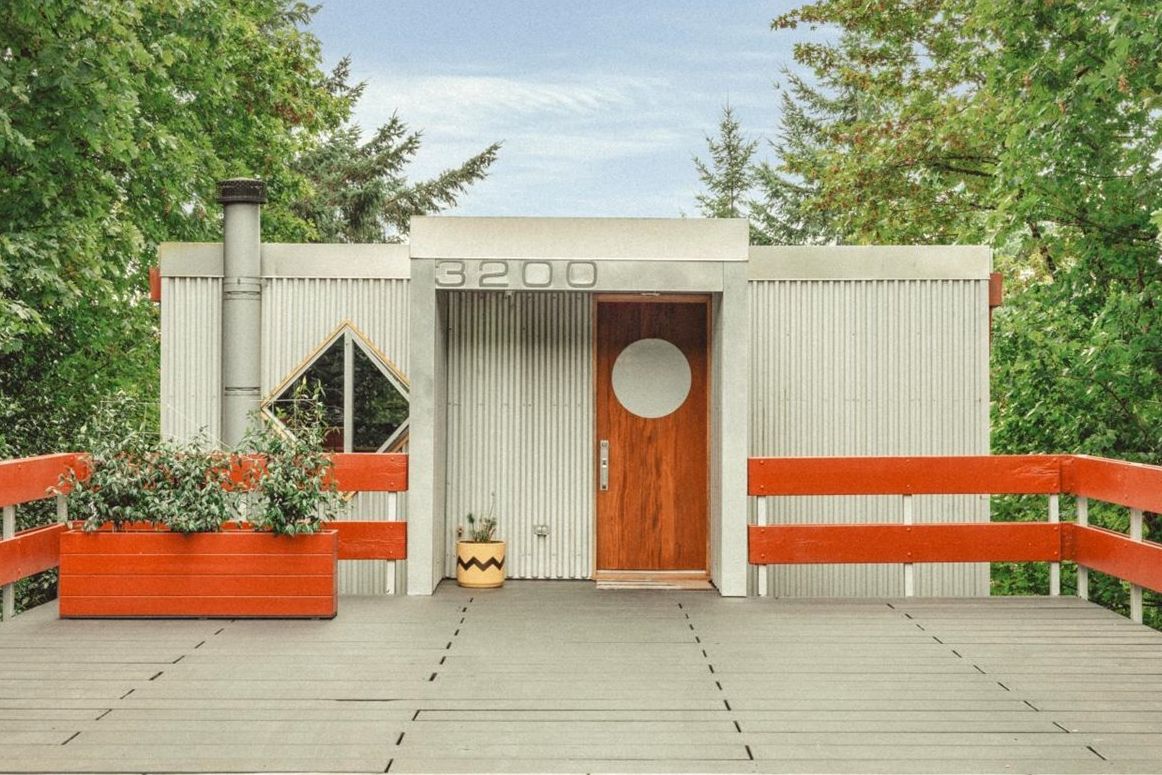The Amazing Design Stories Behind Portland's 5 Greatest Bridges
As Tilikum Crossing—the newest addition to Portland’s iconic family of bridges—marks its first full week in service, explore the singular design and architectural histories behind our city’s signature spans.
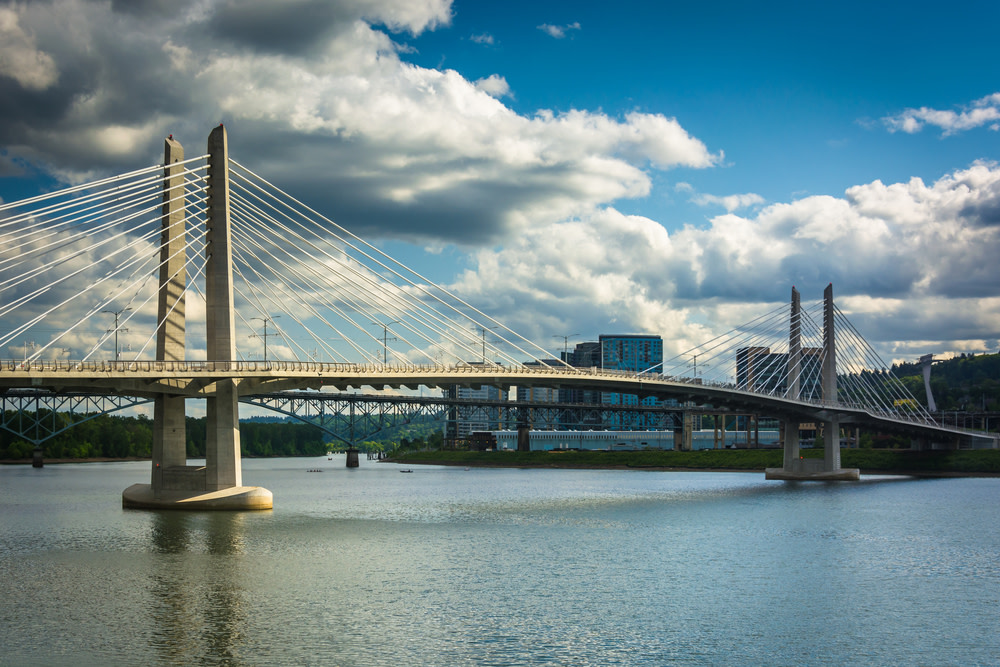
Image: Shutterstock
Tilikum Crossing
It has been 42 years since a bridge has been built across the Willamette, making Tilikum the bridge of the 21st century—and state-of-the design emulates that. The cable-stay bridge’s enormous towers and vibrantly white cables signal its distinctiveness: Tilikum is the United States’ first ever multi-modal bridge to accommodate light rail, streetcar trains, buses, and pedestrians, but no private automobiles. Designer Donald MacDonald wanted to ensure the visibility of the river, sky-, and tree lines by using a saddle-type cable-stay model. Unlike most cable-stay bridges, Tilikum’s cables go from the deck and up through the tower all the way down to the other side, allowing for shorter, narrower towers and an almost translucent effect.

Image: Shutterstock
Steel Bridge
Although the original Steel Bridge, constructed in 1888, was the first railroad bridge across the Willamette River, the current Steel Bridge is distinguished by its innovative 20th century industry: it’s the only double-deck vertical lift bridge of its kind in the world today. Each deck moves independently from one another, the upper deck of the lift span built for vehicles, the lower deck built for trains. Yet, when the lifts work together, the true feat occurs. Taking only 90 seconds, both lifts displace more than 9 million pounds. As the author of The Portland Bridge Book, Sharon Wood Wortman, said, “It’s just this big ole ugly, black, rusty truss bridge, but honestly it’s an amazing bridge and incredible industrial archeology.”
Hawthorne Bridge
Among the Hawthorne’s many historic characteristics, consider its railings. Built in 1910, the railings were originally designed at a height to prevent horses from jumping over the side. Hawthorne’s most distinct historic characteristic, however, lies with its engineering technology: it was one of the nations first vertical-lift bridges—and is now the nation’s last remaining in operation.
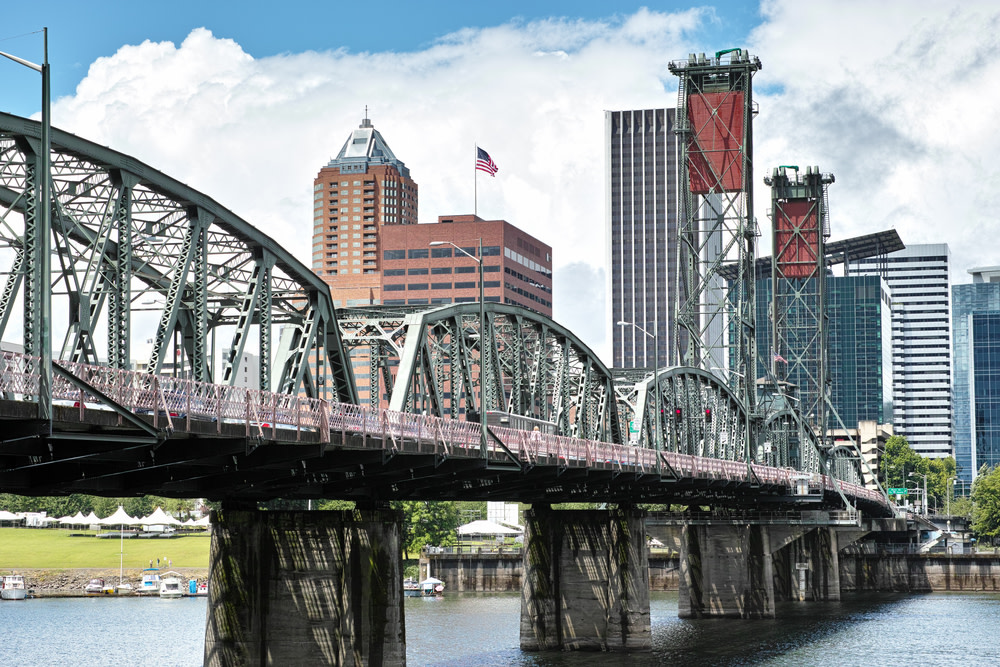
Image: Shutterstock
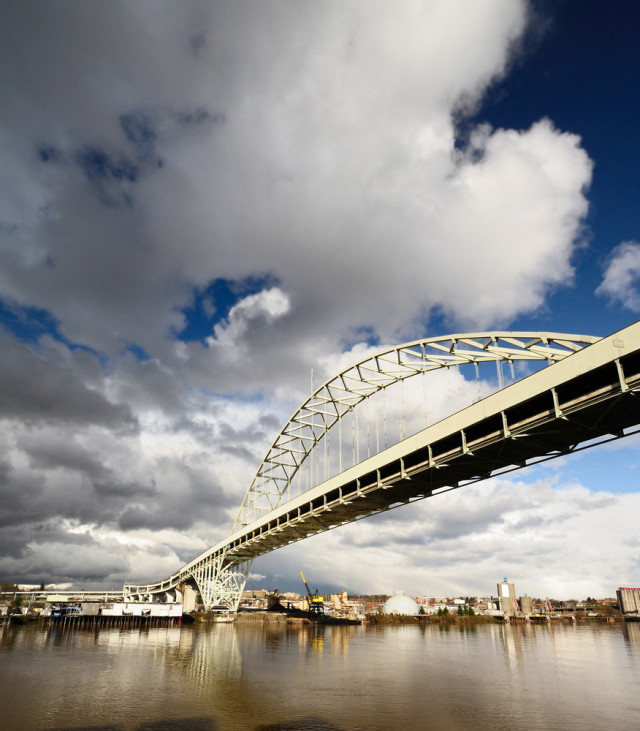
Image: Shutterstock
Fremont Bridge
The Fremont Bridge undoubtedly dominates the Willamette. At 1,255 ft long, the main span makes Fremont the longest bridge structure on the Oregon state highway system, and until 2004 it was the longest tied arch bridge of its type in the world. Today the Fremont receives almost 110,000 cars traveling across it everyday—but zero pedestrians, for it has no sidewalks. But in 1974, four days before its opening, an estimated 30,000 people packed the double-deck bridge for Pedestrian Day, created in response to requests by residents statewide who wanted to feel what it was like to stand on the Fremont for the first and only time. After the uncharismatic Marquam Bridge opened in 1966, public outcry prompted state highway authorities to invite the Portland Art Commission to help design the Fremont. With a more modern look, the Fremont was Oregon’s third bridge to be designed in the computer era by Chicago native Ralph Modjeski.
The steel plate located in the upper deck is designed with strengthening or stiffening properties in two directions, thus “orthopedic. This design allows the incredibly long bridge to carry its own weight. At the time of its construction, the Freemont Bridge made the historic records, but not for its design. After the center span was assembled in Swan Island, the 6,000-ton span floated down stream on two barges, then lifted 175 ft into place in a 50 hour lift. At the time this lift was the heaviest ever made in history, making the Guinness Book of World Records.
St. Johns Bridge
Talk about timing: the first anchorages of the $4.2-million dollar cable suspension bridge began construction just a month before 1928’s “Black Thursday” stock crash, the day the United States hurled into the Great Depression. Today, St. Johns is one of only three cable suspension bridges still standing in Oregon. A structural, architectural, and design victory, the bridge set engineering records of its time for the longest main span of any bridge west of Detroit, the world’s longest and largest pre-stressed twisted rope strand cables, and the tallest reinforced concrete pier in the world. Today however, St. Johns is best known for its enormous twin Gothic style arches, towering 400 ft high and withstanding the cable pull of more than 8,500 tons. These famous arches were designed by New York architect David B. Steinman.
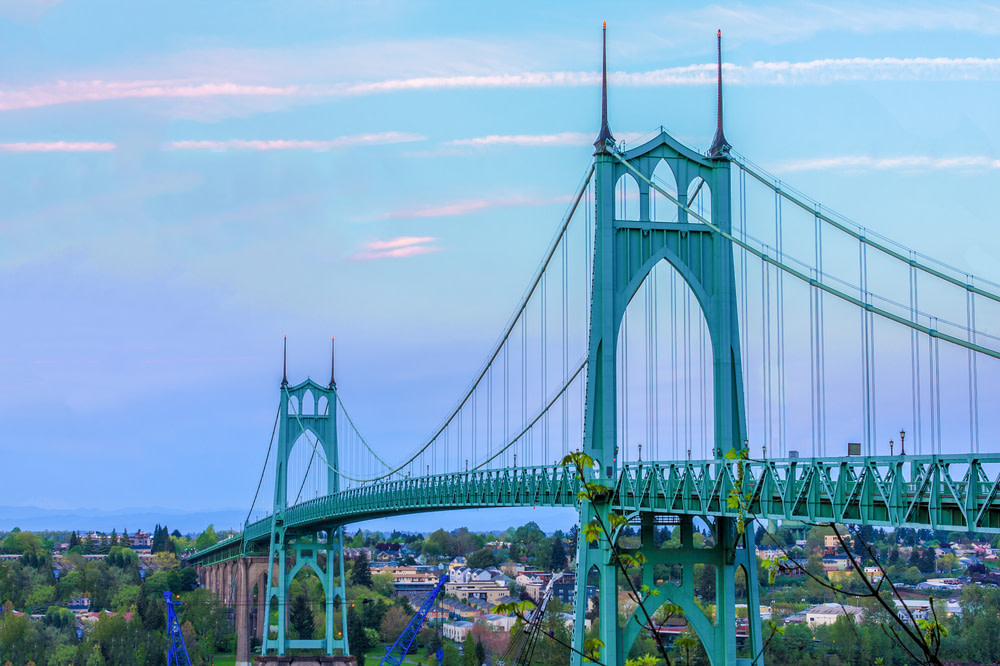
Image: Shutterstock

